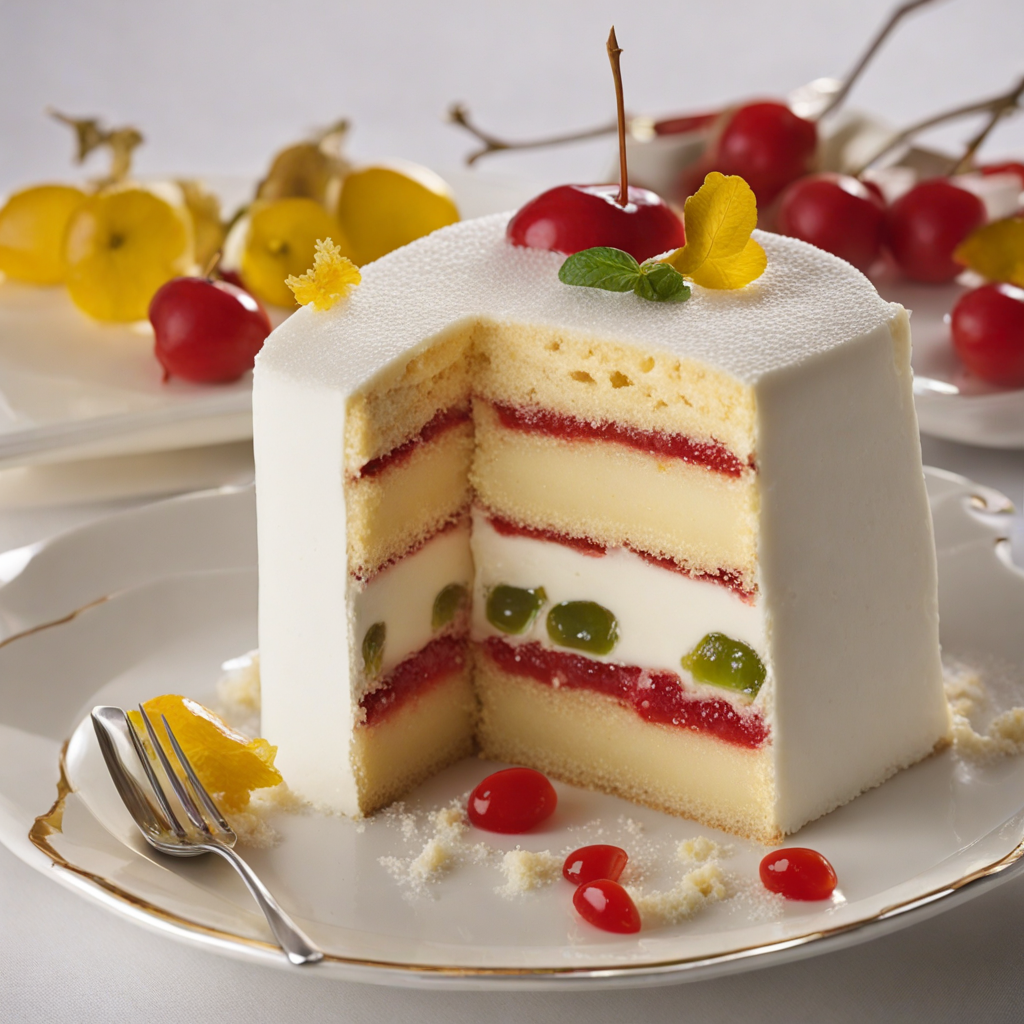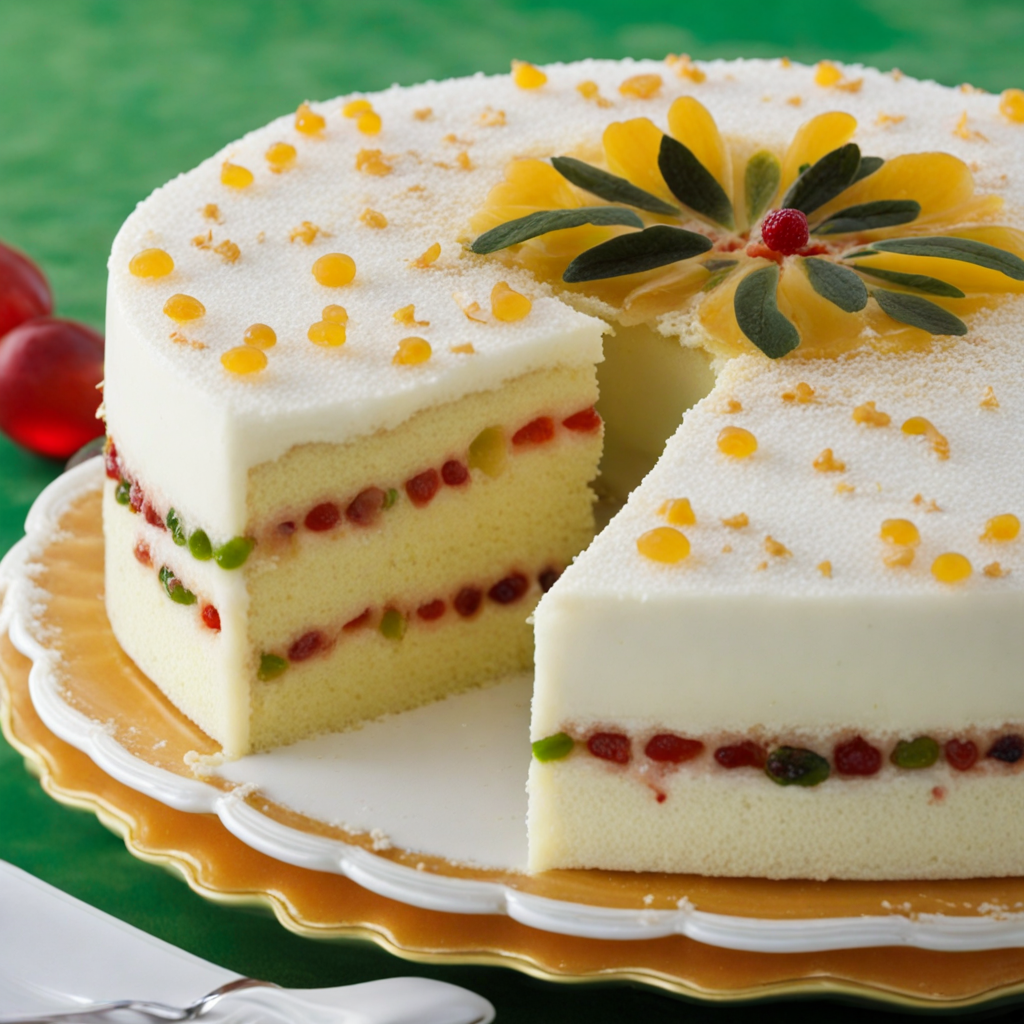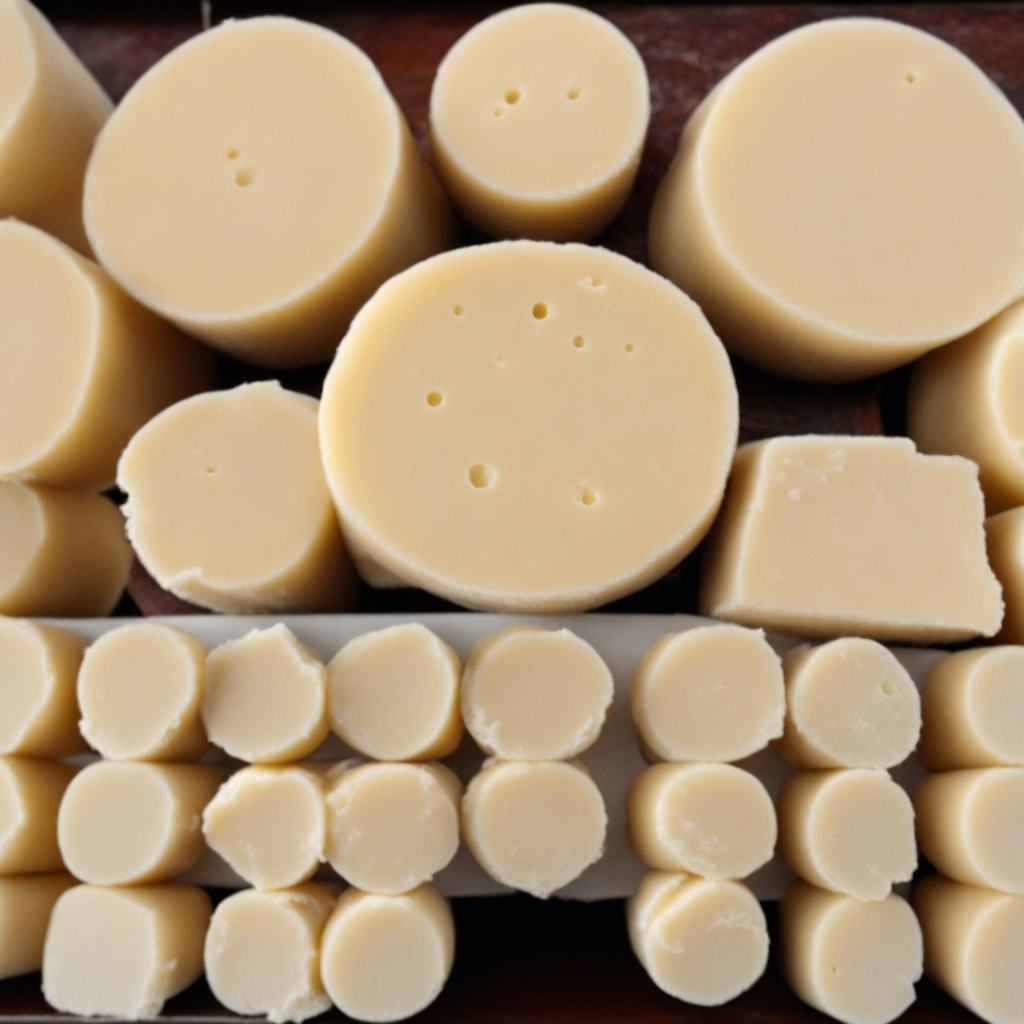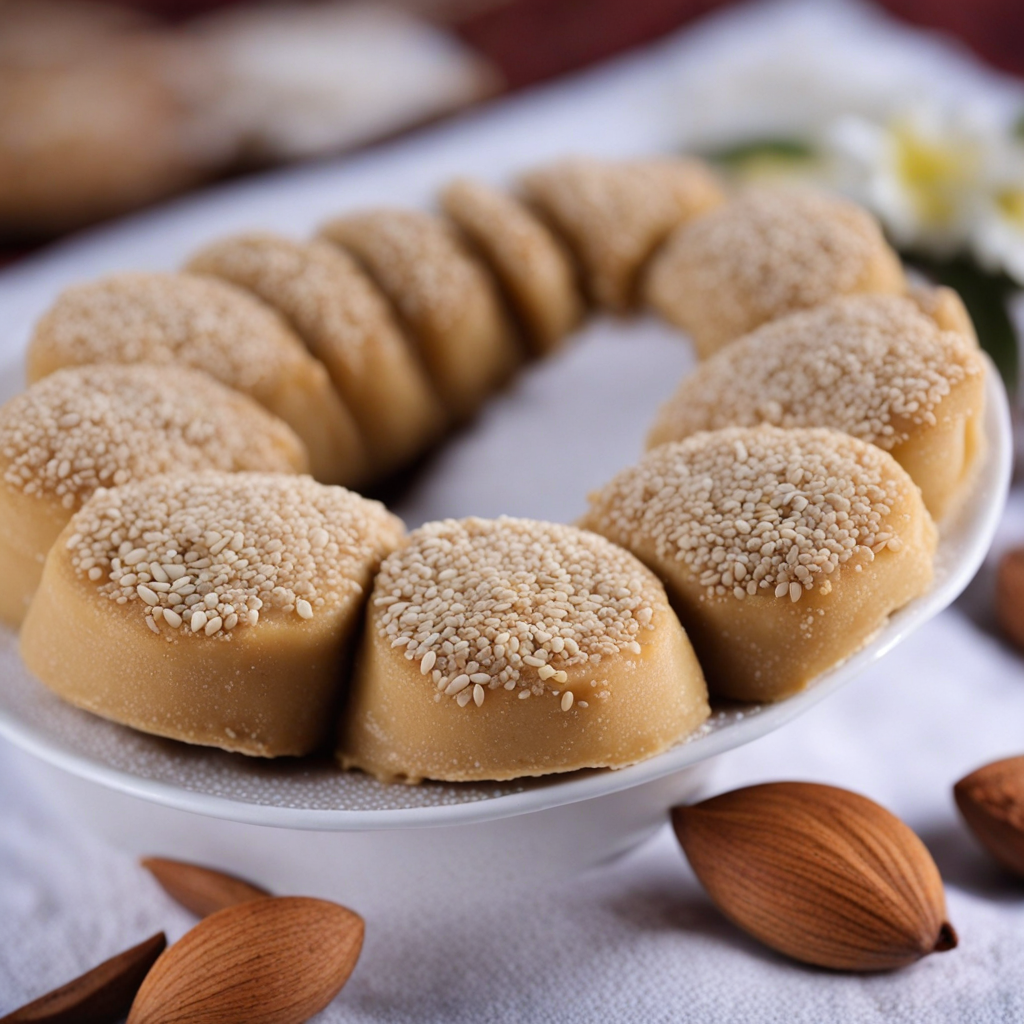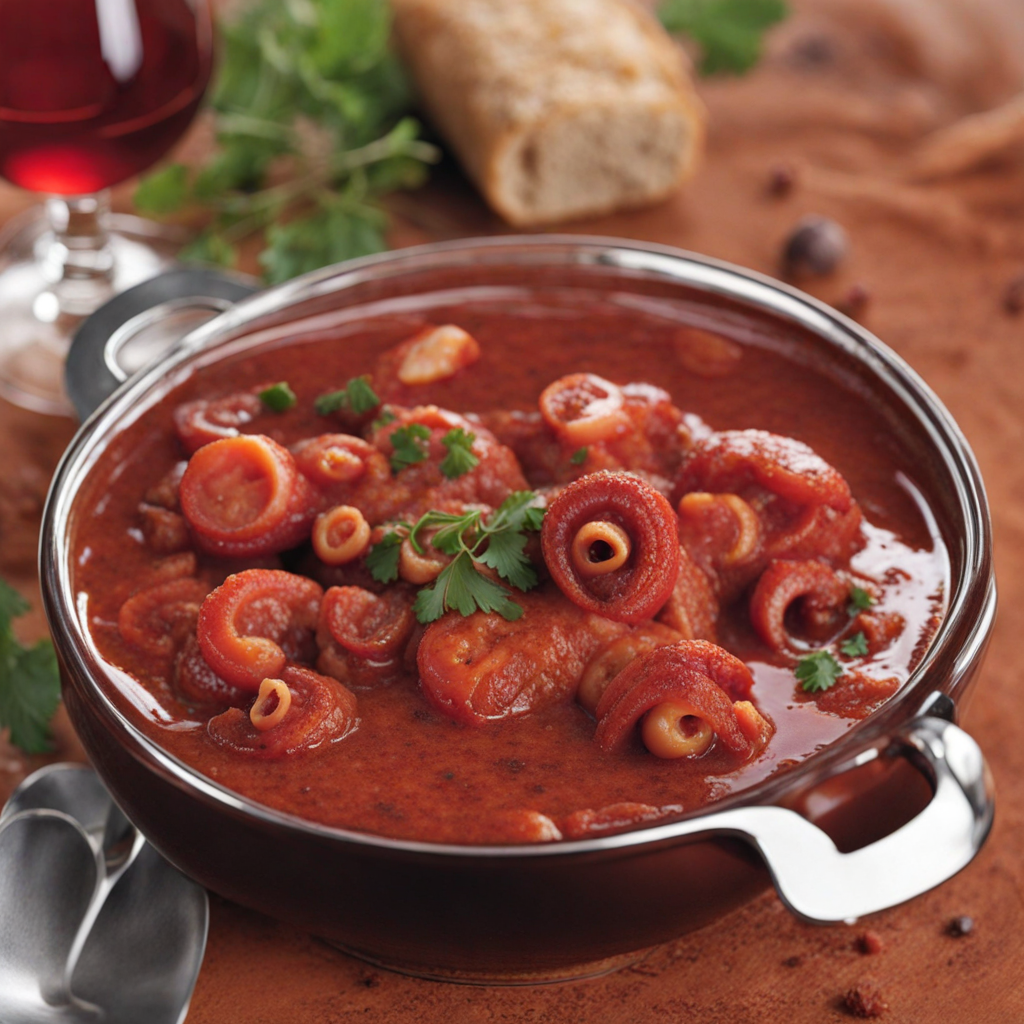Cassata
Cassata is a delightful traditional dessert from Malta, celebrated for its vibrant colors and rich flavors. This sweet treat features a sponge cake that is typically soaked in a sweet syrup or liqueur, which adds an enticing moisture and depth to its taste. The cake is layered with a sweet ricotta cheese filling, often enriched with candied fruits and sometimes chocolate, creating a harmonious balance of creamy and fruity elements. The combination of textures—from the soft, spongy cake to the smooth ricotta—makes each bite a luxurious experience. One of the defining characteristics of Cassata is its exquisite decoration. The cake is often covered with a layer of marzipan, giving it a smooth, glossy finish, and is sometimes adorned with colorful icing or fresh fruits. This visually stunning presentation makes Cassata not only a treat for the palate but also a feast for the eyes. The careful craftsmanship involved in its preparation reflects the rich culinary traditions of Malta, where desserts are often a centerpiece during celebrations and gatherings. The flavors of Cassata are a true representation of Maltese culture, blending Mediterranean influences with local ingredients. The use of ricotta cheese lends a creamy, slightly tangy note that pairs beautifully with the sweetness of the syrup-soaked cake and the bright flavors of the candied fruit. Each slice of Cassata offers a unique taste experience, evoking the warmth of Maltese hospitality and the joy of sharing delicious food with loved ones. Whether enjoyed as a special dessert for festivities or as a delightful afternoon treat, Cassata is a must-try for anyone looking to explore the sweet side of Maltese cuisine.
How It Became This Dish
Kassata: A Sweet Journey Through Malta’s Culinary Heritage Kassata, a delectable dessert rooted in Maltese culture, is a culinary emblem that encapsulates the island’s rich history and multifaceted influences. This traditional cake, often characterized by its vibrant colors and eclectic flavors, is much more than just a treat; it is a testament to Malta’s diverse cultural tapestry and its evolution over the centuries. Origins and Historical Context The origins of kassata can be traced back to the island's historical encounters with various civilizations, most notably the Arabs, who ruled Malta from the 9th to the 11th centuries. The Arabs introduced sugar cane cultivation to the island, significantly influencing Maltese cuisine. This period also saw the introduction of new ingredients, such as almonds and citrus fruits, which would later become integral to the composition of kassata. As Malta transitioned through the ages—under the rule of the Normans, Knights of St. John, and various other powers—the dessert continued to evolve. The Knights of St. John, in particular, played a pivotal role in the culinary development of Malta. Their arrival in the 16th century brought with them a wealth of ingredients and cooking techniques from across Europe and the Mediterranean, which further enriched the local cuisine. The name "kassata" itself is derived from the Sicilian term "cassata," a cake that shares some similarities with its Maltese counterpart. The Sicilian cassata, with its origins in Arab influences, features ricotta cheese and is often adorned with candied fruits and marzipan. This connection highlights the shared culinary heritage between Malta and Sicily, shaped by geography and history. Cultural Significance Kassata is not merely a dessert; it holds a significant place in Maltese culture, often associated with celebrations, holidays, and religious events. Traditionally prepared during special occasions such as weddings, Easter, and Christmas, kassata embodies the spirit of festivity and community. Families often gather to bake and decorate the cake, reinforcing bonds and passing down culinary traditions through generations. The cake's vibrant presentation, typically adorned with colorful icing, candied fruits, and sometimes a layer of marzipan, makes it a centerpiece at festive gatherings. The act of sharing kassata symbolizes togetherness and joy, making it an essential part of Malta's social fabric. Ingredients and Preparation The preparation of kassata is a labor of love, involving a blend of ingredients that reflect the island's agricultural bounty. The primary components include sponge cake, ricotta cheese, sugar, and various flavorings such as vanilla, lemon zest, and chocolate. The cake is often layered with fruit preserves, typically made from local fruits like figs and apricots. This layering process not only adds complexity to the flavors but also contributes to the cake's vibrant appearance. One of the distinctive features of kassata is its decoration. Bakers often employ a variety of techniques, using icing to create intricate designs and patterns that elevate the cake from a simple dessert to a work of art. The addition of candied fruits, nuts, and even chocolate pieces further enhances its visual appeal and taste. Evolution Over Time Throughout the centuries, kassata has undergone various transformations, adapting to changing tastes and culinary trends. In the 19th and 20th centuries, as Malta became a hub for tourism, the demand for traditional Maltese cuisine surged. This resurgence prompted local bakers and chefs to refine their recipes, incorporating modern techniques while staying true to their roots. In contemporary times, kassata has also embraced innovation. While traditional recipes remain cherished, modern interpretations have emerged, featuring alternative ingredients to cater to dietary preferences. For instance, some bakers have experimented with gluten-free flour, vegan substitutes for ricotta, or even new flavor profiles inspired by international cuisines. These adaptations reflect the dynamic nature of food culture, where tradition meets innovation. Additionally, kassata has gained recognition beyond Malta's shores. As Maltese diaspora communities spread across the globe, they carried the flavors of their homeland with them. Today, kassata can be found in Maltese restaurants and bakeries in various countries, allowing a broader audience to experience this beloved dessert. Conclusion Kassata stands as a delicious representation of Malta's rich culinary heritage, intertwining history, culture, and community. Its evolution from a traditional wedding cake to a beloved dessert enjoyed year-round speaks to the island's resilience and adaptability. As Malta continues to embrace its past while looking toward the future, kassata remains a symbol of identity, celebration, and the unbreakable bonds of family and tradition. In a world where food often serves as a conduit for cultural exchange, kassata exemplifies how a simple dessert can encapsulate a nation’s history and values. Whether enjoyed during a festive gathering or as a nostalgic reminder of home, kassata remains a sweet testament to Malta’s enduring legacy—a delicious slice of history that continues to delight and inspire generations.
You may like
Discover local flavors from Malta


